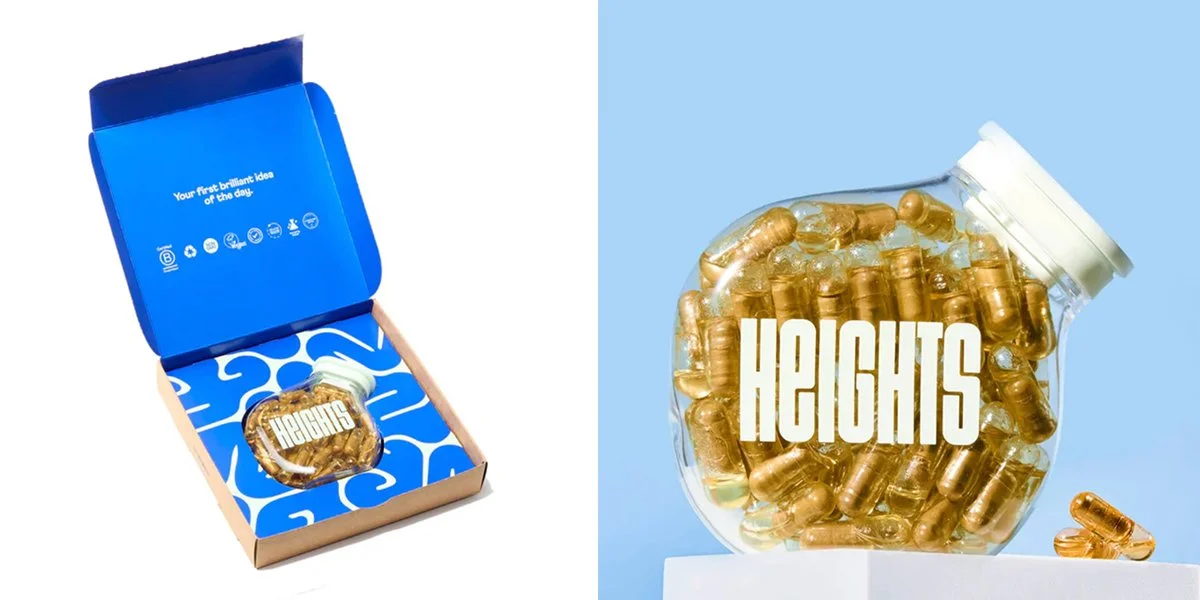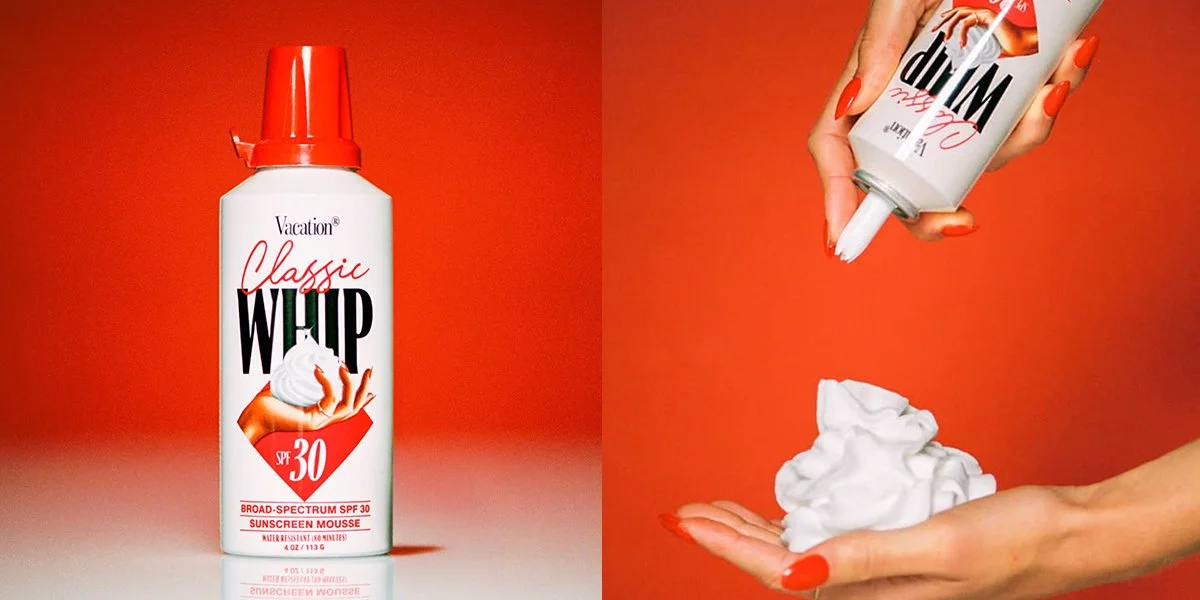Own your packaging format
The overlooked design move that can be the key differentiator for your brand.
One of the biggest concerns I hear from founders is:
How do we stand out in a crowded market?
The truth is, most categories are crowded, and packaging is often the first customer touchpoint. In fact, 72% of customers say packaging design influences their decision to buy. Whilst colour and visual design are natural go-tos, let’s not forget about format. Let me show you a few ways to do it 👀.
(www.globenewswire.com)
Change the size, shape or material
Even the slightest change can feel disruptive.
Bouf Haircare shows this well. They’ve kept the classic glass tincture bottle for their serum, but added a die-cut label that matches their ridged lid caps. A subtle tweak, but it feels considered and instantly elevates the product.
Or look at Grazia Olive Oil. In a category dominated by glass bottles and heritage cues, they went for a bright and playful approach. Plastic bottles and refillable aluminium cans, bold colour, playful copy. Suddenly, olive oil felt like a must-have kitchen accessory for a younger audience. It definitely brightened up that aisle. They’ve since added glass bottles, too, proving you can adapt without losing what made you stand out in the first place.
Own a signature format
When the format itself becomes iconic, it turns into a brand asset.
Let’s take DTC brain health and wellness startup Heights. They needed their packaging to align with two factors: 1) fitting through a letterbox, 2) be unique to the brand, whilst also using the lowest carbon footprint material, which turned out to be PET. The result? A unique, memorable and iconic brand asset. I personally bought this for years, mainly because of how much I loved the packaging.
Align your format with positioning
Format is a way to tell your brand story.
Take Liquid Death, for example. Their tall beer-like cans were a deliberate move to cause havoc in the water market. It matched their “murder your thirst/death to plastic” narrative and positioned them as the category rebel. That packaging choice has helped them grow into a $1.4 billion brand.
Wild deodorant is another one. Their mission was clear from day one: get rid of single-use plastics in bathrooms. Launching a refillable aluminium case with compostable refills made their sustainability story impossible to miss. Their recent Unilever acquisition shows just how powerful the right format and brand mission can be.
Flipping the entire experience
This isn’t for the faint-hearted and comes with its own risks. Sometimes it’s not about recreating the product itself, it’s about delivering it in a fun, unique way.
Vacation, the hero of showing us how it’s done with their Whip sunscreen. A whipped-cream style canister, complete with nozzle. So good it might end up in your fridge. Totally unexpected, but perfectly aligned with their fun, personality-driven brand. It’s become a viral hit thanks to the novelty and shareability .
A few things to keep in mind
Bespoke formats come with caveats - including price, time, effort, and logistics. If it’s not an option right now, get creative with your brand to stand out.
Sustainability should also be considered, as many consumers now expect it from brands.
Whilst also keeping an eye on category and cultural codes, and knowing when to break them.
For example, in Korea, there is a recycling incentive agreement for soju brands; hence, the sea of green bottles that the majority of brands use is also associated with health and vitality, and has become pretty iconic in Korea. But that doesn’t mean there isn’t a chance to pivot… as Jinro broke away from the system with “Jinro is Back” in a blue bottle.
You don’t always need a radical shift. Sometimes it’s a small tweak, sometimes it’s flipping the whole experience. The key is knowing what’s the go-to in your category, then finding your opportunity to put your own remix on things.







